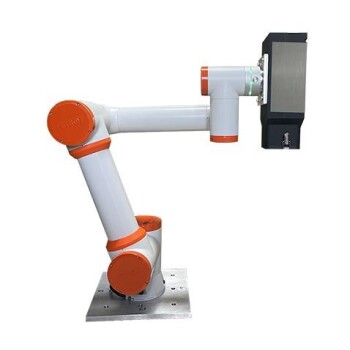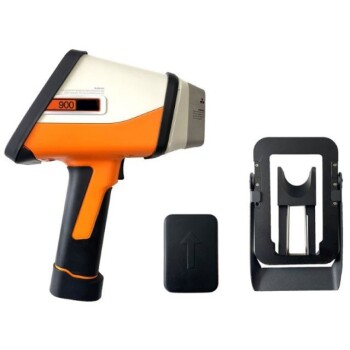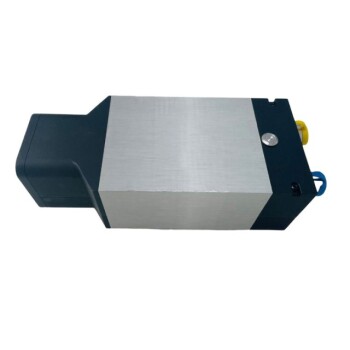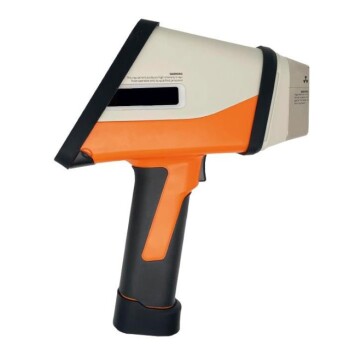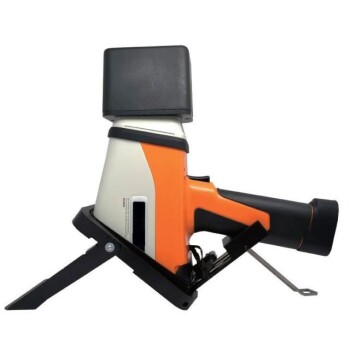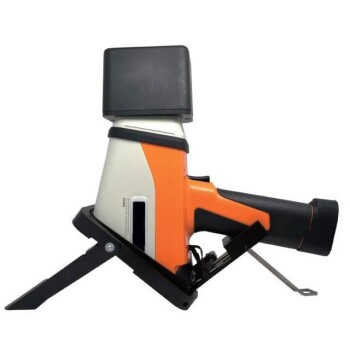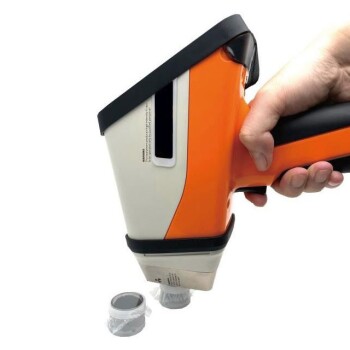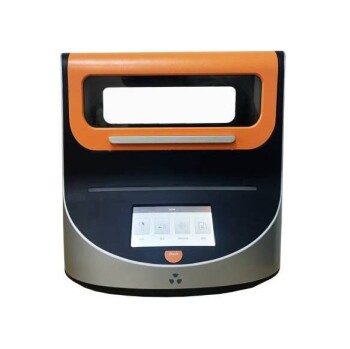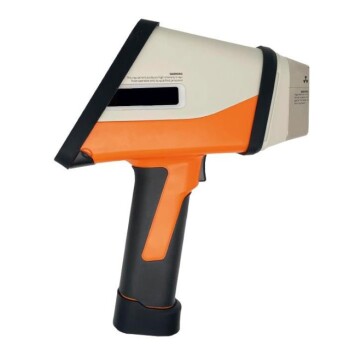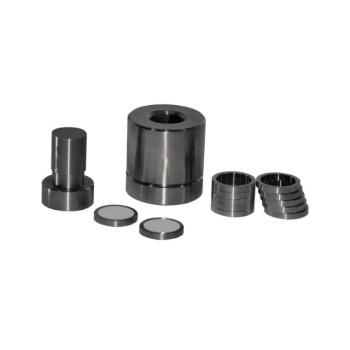To detect and analyze elements, specialized machines are designed to identify and quantify the presence of specific elements in a sample. One of the most prominent and widely used devices for this purpose is the X-ray Fluorescence (XRF) analyzer, particularly in its handheld or portable form. XRF analyzers are capable of non-destructively detecting elements ranging from Magnesium (Mg) to Uranium (U), depending on the instrument's configuration. Beyond XRF, other methods and machines, such as spectroscopy, chromatography, mass spectrometry, and thermal analysis, are also employed for element detection, each with its own unique applications and advantages. These machines are essential in fields like material science, environmental testing, mining, and forensics, where precise elemental analysis is critical.
Key Points Explained:

-
X-ray Fluorescence (XRF) Analyzers
- What it is: XRF analyzers are devices that use X-ray technology to detect and quantify elements in a sample.
- How it works: When X-rays are directed at a sample, they excite the atoms, causing them to emit secondary (fluorescent) X-rays. Each element emits X-rays at unique energy levels, which the analyzer detects and interprets to identify the elements present.
- Applications: XRF is widely used in mining, metal recycling, environmental testing, and quality control in manufacturing.
- Advantages: Non-destructive, portable, and capable of detecting a wide range of elements (from Magnesium to Uranium).
-
Spectroscopy-Based Methods
- Types: Ultraviolet (UV), Infrared (IR), and Nuclear Magnetic Resonance (NMR) spectroscopy.
- How it works: Spectroscopy measures the interaction of light (or other electromagnetic radiation) with matter. Each element or compound absorbs or emits light at specific wavelengths, creating a unique spectral fingerprint.
- Applications: Used in chemical analysis, environmental monitoring, and pharmaceutical research.
- Advantages: High sensitivity and specificity for identifying elements and compounds.
-
Chromatography-Based Methods
- Types: Gas Chromatography (GC), Liquid Chromatography (LC), and Ion Chromatography (IC).
- How it works: Chromatography separates components of a mixture based on their interaction with a stationary phase and a mobile phase. The separated components are then detected and analyzed.
- Applications: Used in environmental testing, food safety, and pharmaceutical analysis.
- Advantages: Effective for complex mixtures and trace-level detection.
-
Mass Spectrometry (MS)
- Types: Standalone Mass Spectrometers, Gas Chromatography-Mass Spectrometry (GC-MS), and Liquid Chromatography-Mass Spectrometry (LC-MS).
- How it works: MS ionizes chemical compounds and separates the ions based on their mass-to-charge ratio. The resulting spectrum provides detailed information about the elemental and molecular composition of the sample.
- Applications: Used in proteomics, metabolomics, and forensic science.
- Advantages: High precision and ability to analyze complex samples.
-
Energy Spectrum Methods
- Types: Fluorescence Spectroscopy and Diffraction Spectroscopy.
- How it works: These methods analyze the energy emitted or absorbed by a sample when exposed to specific energy sources, such as X-rays or electrons.
- Applications: Used in material science, geology, and environmental analysis.
- Advantages: Non-destructive and capable of providing detailed elemental and structural information.
-
Thermal Spectrum Methods
- Types: Thermogravimetric Analyzers (TGA) and Differential Scanning Calorimetry (DSC).
- How it works: These methods measure changes in a sample's mass or heat flow as it is subjected to controlled temperature changes.
- Applications: Used in polymer analysis, pharmaceuticals, and material characterization.
- Advantages: Provides insights into thermal stability and composition.
Summary of Key Considerations for Equipment Purchasers:
- Purpose: Determine the specific elements or compounds you need to detect and the required sensitivity.
- Sample Type: Consider whether the sample is solid, liquid, or gas, and whether non-destructive testing is required.
- Portability: For field applications, handheld devices like XRF analyzers are ideal.
- Cost and Maintenance: Evaluate the initial investment, operational costs, and maintenance requirements.
- Accuracy and Precision: Ensure the machine meets the required analytical standards for your application.
By understanding the capabilities and applications of these machines, purchasers can make informed decisions to select the most suitable equipment for their needs.
Summary Table:
| Method | How It Works | Applications | Advantages |
|---|---|---|---|
| XRF Analyzers | Uses X-rays to excite atoms, emitting fluorescent X-rays for element detection. | Mining, metal recycling, environmental testing, quality control. | Non-destructive, portable, detects elements from Magnesium to Uranium. |
| Spectroscopy | Measures light interaction with matter to identify elements via spectral data. | Chemical analysis, environmental monitoring, pharmaceutical research. | High sensitivity and specificity for element identification. |
| Chromatography | Separates mixture components using stationary and mobile phases. | Environmental testing, food safety, pharmaceutical analysis. | Effective for complex mixtures and trace-level detection. |
| Mass Spectrometry | Ionizes compounds and separates ions by mass-to-charge ratio. | Proteomics, metabolomics, forensic science. | High precision and ability to analyze complex samples. |
| Energy Spectrum | Analyzes energy emitted/absorbed by samples exposed to X-rays or electrons. | Material science, geology, environmental analysis. | Non-destructive, provides detailed elemental and structural information. |
| Thermal Spectrum | Measures mass or heat flow changes during controlled temperature variations. | Polymer analysis, pharmaceuticals, material characterization. | Provides insights into thermal stability and composition. |
Ready to find the perfect elemental analysis machine for your needs? Contact our experts today for personalized recommendations!
